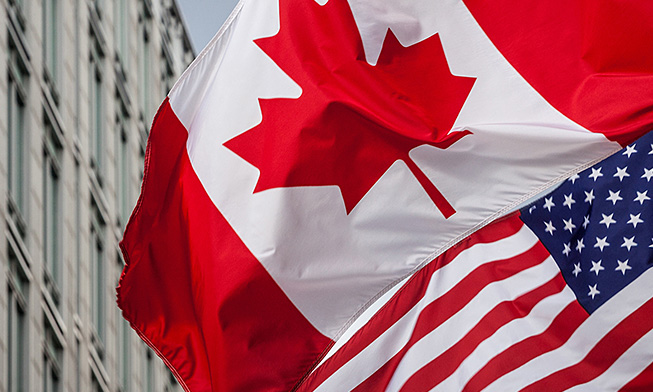Options for Canadians to immigrate to or live and work in the United States vary depending on why one is seeking to become a U.S. resident. Some of the most common reasons Canadians move to the United States include education, employment, business opportunities, and the more favorable tax regime in many U.S. jurisdictions, including Puerto Rico.
Employment
Individuals interested in moving to the United States to look for new career opportunities should know that to be eligible, they must be sponsored by an employer or qualify for a National Interest Waiver. Below are a few categories and visa options for individuals interested in acquiring permanent residence in the United States based on their employment skills.
EB1 Category: This category is for (A) individuals with extraordinary skills and abilities in arts, science, education, athletics, or business; (B) tenure track professors and researchers; (C) multinational executives and managers.
EB2 Category: This category is for the advanced degree professionals and extra skilled employees in business, science, or arts. The self-petition option under a National Interest Waiver does not require a US employer sponsor or job offer.
EB3 Category: This field is for skilled workers, professionals, and ineligible workers for the EB1-EB2 categories (usually holding a bachelor’s degree).
TN NAFTA Professionals
The North American Free Trade Agreement (NAFTA) created unique economic and trade relationships for the United States, Canada, and Mexico. The TN nonimmigrant classification permits qualified Canadian citizens to seek temporary entry into the United States to engage in business activities at a professional level.
Among the types of professionals eligible to seek admission as TN nonimmigrants are accountants, engineers, lawyers, pharmacists, scientists, and teachers. You may be eligible for TN nonimmigrant status, if:
– You are a citizen of Canada;
– Your profession qualifies under regulations;
– The position in the United States requires a NAFTA professional;
– You have a prearranged full-time or part-time job with a U.S. employer; and
– You have the qualifications to practice in the profession in question.
Investment
E2 Treaty Investment Visa
E2 Visa grants a business investor to enter the United States for the sole purpose of setting up a business. However, this visa does not give you permanent residency, but one advantage of the E2 visa is that it can be continuously extended as long as the business is viable. The investor can either invest in a new or existing company.
EB-5 Visa
The EB-5 visa provides a method of obtaining a green card for foreign nationals who invest in a “new commercial enterprise” in the United States. The EB-5 program “affords foreign nationals and their spouses and unmarried children under age 21 the ability to obtain a U.S. visa based solely upon a minimum investment in a for-profit enterprise that creates or retains a specified number of jobs”. To obtain the visa, individuals must invest $1,000,000 or $1,800,000 after Nov 21, 2019 (or at least $500,000 or $900,000 after November 21, 2019, in a Targeted Employment Area – high unemployment or rural area), creating or preserving at least ten jobs for U.S. workers excluding the investor and their immediate family.
Education
The United States is known for having world-class educational institutions and if you are interested in immigrating to the U.S. for education, then below are two of the visa options one may pursue:
F-1 Student Visa
The F-1 Student visa is ideal for individuals planning to enroll and study in institutions such as elementary or academic high schools, universities, seminaries, accredited colleges, conservatories, or language training programs. Eligibility criteria for the F-1 student Visa are that the program you are enrolled in must culminate in receiving a degree, diploma, or certificate. The Institute must have authorization from the U.S. government to enroll international students.
M-1 Student Visa
The M-1 visa is issued for students planning to attend vocational schools or other non-academic programs. Also, M-1 Visa holders are not allowed to work throughout their education.
Note that if, after completing your graduation, you can remain in the United States to complete “Practical Training” (OPT) and can then remain permanently through an employment-based visa.
Marriage
Below are immigration options for individuals engaged/married to U.S. Citizens and are planning to settle down in the United States.
K-1 fiancé Visa
Individuals who plan to get married in the United States should apply for a K-1 fiancé visa. The K-1 visa will allow you to enter the U.S. for 90 days’ time period and get married. If you get married within 90 days, you will be eligible to apply for lawful permanent residence in the United States.
Immigrant Visa for a Spouse of a US Citizen (IR/CR1 VISA)
The IR1/CR1 Visa is a Family-based green card ideal for Canadians married to U.S. citizens. It permits a U.S. citizen’s spouse to live with their partner in the United States as a permanent resident.







